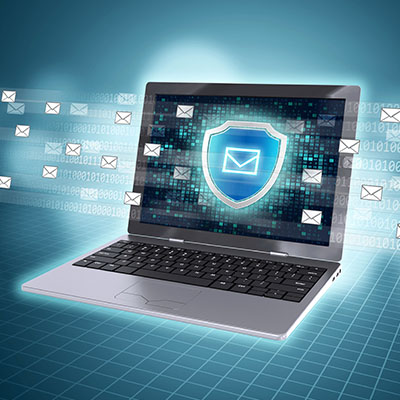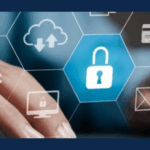 The seamless functionality of email often leads individuals to take it for granted. Whether accessing Outlook or logging into Gmail, the delivery of emails seems effortless. However, the intricate and expansive network of systems essential for email operations often goes unnoticed, and understandably so, given its complexity.
The seamless functionality of email often leads individuals to take it for granted. Whether accessing Outlook or logging into Gmail, the delivery of emails seems effortless. However, the intricate and expansive network of systems essential for email operations often goes unnoticed, and understandably so, given its complexity.
Yet, if there’s no active management of your email system, no provision of protective measures for its underlying technology, and no assurance of continuous and proper configuration, your seemingly functional email might inadvertently expose you to unseen threats.
Security Needs to Be the Foundation of Your Business’ Email
Email, being the primary entry point for a majority of cyberattacks, underscores the importance of robust security measures. In 2022 alone, 75% of organizations fell prey to successful email attacks, ranging from spam and malware delivery to ransomware, data theft, and spoofing. Despite the appearance of stability in corporate email solutions, advancements in modern best practices and cybersecurity protections are crucial for maintaining the safety of inboxes.
While decision-makers might be tempted to overlook the need for email system adjustments, fortifying your email infrastructure is a significant step toward averting more severe and devastating issues.
Adding to the challenge is the fact that many businesses may have IT providers managing their technology but without a focus on email security or investment in tools for its protection against contemporary threats. Unfortunately, when a critical issue arises, the responsibility falls beyond the contractual scope, resulting in unexpected costs for the business.
This makes it crucial that you ensure your email’s protections, whether they are managed by an external provider or an internal resource. So, what constitutes a robust email security solution?
Three Starting Points to a Secure Email Implementation
User education plays a pivotal role. While not a technical aspect deployable by the IT department, educating end users about cybersecurity risks is imperative. Phishing simulation, for instance, involves sending seemingly legitimate emails designed to mimic real threats. If an employee falls victim, the simulation provides gentle explanations, outlines risks, and offers training resources.
Meeting regulatory compliance standards is another critical aspect, as industries increasingly adopt their own guidelines. Email, often dealing with sensitive information, should not be a repository for data like financial credentials, health records, or credit card information. Implementing additional systems, such as third-party encryption tools and secure customer portals, ensures secure transmission of sensitive data.
Email backup is equally essential. While typical data backup devices may cover files, they might not extend to your email solution, especially if it resides in the cloud. Cloud-based email solutions typically offer built-in backup, requiring configuration, testing, and regular audits to ensure reliability. Documenting these processes provides decision-makers with peace of mind during disaster recovery planning, business continuity reviews, security audits, and insurance renewals.
Turn to Us for Assistance with All This, and More
Despite its apparent simplicity, overlooking email security can have disastrous consequences. For a comprehensive audit of your technology and to ensure there are no vulnerabilities, we strongly recommend reaching out to us at 216.815.0516. Your proactive approach today can prevent potential threats from infiltrating your systems tomorrow.





